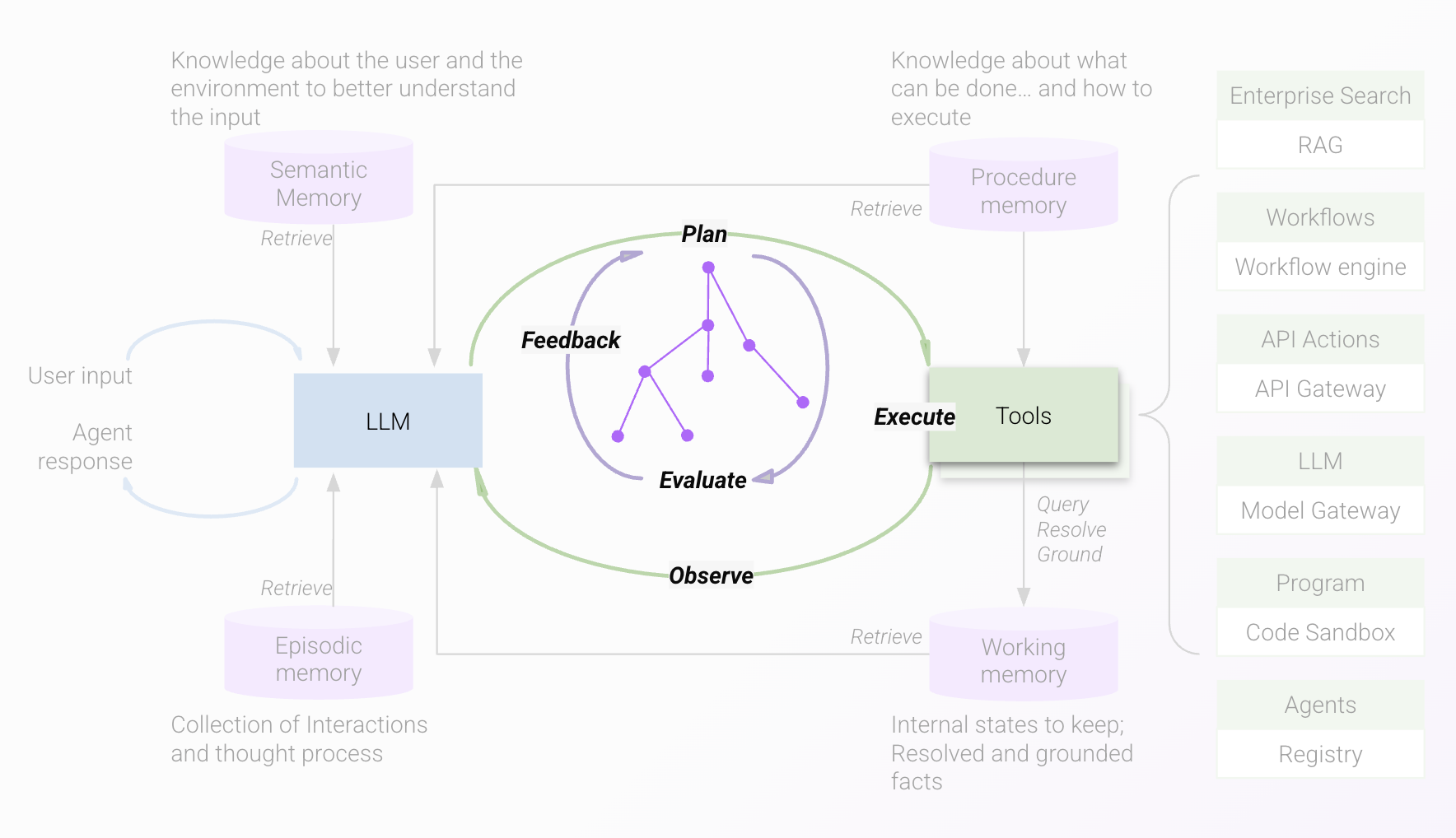Plugin Selection
Plugin selection refers to the AI Assistant's ability to autonomously determine which plugins to call to execute the plan for the user's request.
It is part of the two inner reasoning loops - planning iteration and execution iteration:

Here, the innermost planning iteration loop defines a plan that involves selecting
- the plugins to call
- the arguments to pass to the selected plugins
This selection is based on the available plugins to call in the environment, which varies from customer to customer. It specifically leverages the description of each plugin (native or custom) and the positive and negative examples provided to determine whether the plugin is a good match for the user request.
The AI Assistant can choose multiple plugins at once, a feature called multi-plugin response.
The second loop, called the planning execution loop, then takes the plan devised in planning iteration and executes it by calling the identified plugins, and then observing the outcome. Based on this, it can call other plugins, or return to the user with a response or ask for input.
Does the Assistant treat native and custom plugins differently?
No, the reasoning treats these plugins the same way - plugin descriptions and examples are critical for both.
Currently, it is not possible to modify these parameters for native plugins. This means that for cases where you might see both types of plugins competing for the same request, you can
- Offer both types to the user
- Modify the examples for the custom plugin to cover a different set of utterances from the native plugin
- Keep the native plugin active and use steerability tools to guide the reasoning to select one over the other for specific requests
- Disable the native plugin if the functionality is sufficiently covered with the custom plugin.
Updated about 1 month ago